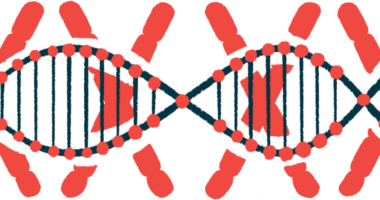LivJoy Foundation funds research in understudied female fragile X population
Fellowship seeks to address difficulties in securing research grants for girls

The LivJoy Foundation is funding a four-year postdoctoral research fellowship for an early career scientist at the University of South Carolina (USC) who will study fragile X syndrome in females.
The sponsorship was borne from a shared vision between Rachel and Brian Clouse, who started the Foundation in honor of their two daughters with fragile X, and Jessica Klusek, PhD, an USC fragile X researcher and expert, to better understand the often-overlooked experience of being female with fragile X.
“Based on our experiences as parents and advocates, we know that many females with fragile X are more than capable of living independent lives; they just need the proper support,” Brian Clouse said in a university news release. “They are most held back by social, psychological, and communication challenges, and USC researchers are addressing all of these areas. It couldn’t be a better fit for LivJoy’s mission to help girls with fragile X live their best lives.”
Fragile X is caused by mutations in the FMR1 gene on the sex-determining X chromosome that disrupt the normal production of proteins needed for brain health.
As males only have one X chromosome, which they get from their mother, those who inherit the mutated FMR1 gene will have more severe disease. Women have two X chromosomes, one from the mother and one from the father, so a healthy FMR1 gene copy can partly compensate for the mutated one, making symptoms of fragile X in females often more subtle and variable, and less easily recognized. Females are diagnosed much later, if at all.
Clouse’s daughters, Amanda and Liv, weren’t diagnosed until ages 8 and 10 when they had genetic testing, even though there were early signs. Finding the right support system for the girls was difficult, Clouse said.
“We were surrounded by some of the best medical specialists in the country, but even they could tell us very little about fragile X syndrome and almost nothing about girls who have it,” he said.
‘Addressing the knowledge gap’ on fragile X girls
The Clouses met Klusek, one of a group of fragile X experts at USC, last year. They found the scientists’ commitment to including females in their fragile X research inspiring.
“From the first time I spoke with Rachel on the phone, we were 100 percent on the same page about needing to address the knowledge gap on girls,” Klusek recalled. “In my career, I have seen over and over that it is just harder to get grants focused on girls funded. We get grant reviews back telling us we should be studying boys instead because girls ‘aren’t as affected.’”
The variability in female fragile X presentations and the costs associated with recruitment also make clinical studies in this population more difficult, Klusek said.
“It is just such a classic example of underrepresentation of women’s health issues in research,” she said.
Breaking the barriers to fragile X research
The postdoctoral fellowship will go to an early career scientist who is embarking on fragile X research in women and girls.
Klusek said the funding will help overcome a number of barriers when it comes to growing the fragile X research field, including helping early scientists access experts to train them, patient populations to engage in the research, and resources they might not normally have.
“The fellowship is an investment in the next generation of scientists who will continue this work in the future,” Klusek said.
That’s exactly the impact the Clouses hope to make with the LivJoy Foundation, which they started with the aim of helping other fragile X girls achieve their goals.
“Our goal is to find, fund, and share programs that enable these individuals to live a life full of joy, and to make it easier for their families to connect them with what they need for every stage of their journeys,” Rachel Clouse said.
The Clouses’ own girls are doing well. Amanda, 21, is enrolled in a college-based transition program and Liv is living independently.
Rachel Clouse was identified as a premutation carrier when Amanda and Liv were diagnosed. This means she carries a type of FMR1 mutation that isn’t enough to cause fragile X on its own, but can become disease-causative when passed to children. Premutation carriers can have issues that haven’t been well-studied, such as anxiety, cognitive and movement impairments, behavioral problems, and reproductive challenges.
How FMR1 premutations affect women is also part of Klusek’s research.
“A lot of the research on aging in the fragile X premutation has just focused on men,” Klusek said in a separate university news release. “We see that women carriers put a lot of focus on their kids and have less bandwidth to pay attention to their own health,” and “they’re also often not being guided by their medical providers, who are not as knowledgeable about the FMR1 premutation.”
“We need more research to guide this population and to guide health care professionals,” Klusek said.







